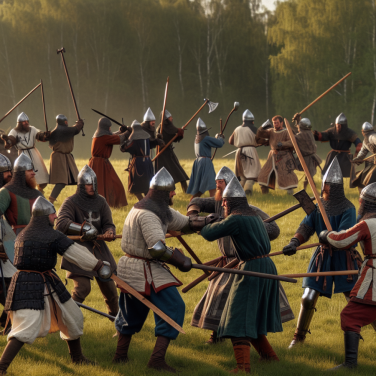The Daily Challenges Faced by Military Patrol Units on the Frontlines
Patrolling the often hostile and unpredictable frontlines, military units tasked with securing borders encounter numerous challenges on a daily basis. The environment in which they operate is fraught with both overt and concealed threats that demand constant vigilance and adaptability.
**Tactical Readiness and Vigilance**
For military units on the frontlines, one of the primary challenges is achieving and maintaining a state of tactical readiness. These forces must be prepared to respond to a variety of situations, ranging from intercepting illegal contraband to engaging with potentially hostile forces. The unpredictability of their adversaries often requires a high degree of alertness and the ability to switch from a state of passive monitoring to active combat within seconds.
**Environmental and Terrain Hardships**
Frontline border patrollers often find themselves in some of the most inhospitable terrains, from vast deserts and high mountains to dense forests and rugged coastlines. They are subject to extreme weather conditions that can rapidly shift and must be well-versed in survival skills to endure these varied environments. Additionally, difficult terrain can lead to operational challenges such as maintaining effective communication lines and mobilizing resources swiftly.
**Psychological and Physical Strain**
The pressures of being on the frontline can also take a significant psychological toll on service personnel. The isolation from loved ones and the unrelenting nature of their duties can lead to stress and mental fatigue. Physically, the demanding nature of patrols, often requiring the carrying of heavy equipment for long distances, exacerbates the risk of injury and long-term health issues.
**Rules of Engagement and Legal Constraints**
Patrol units operating on international borders must adhere to strict rules of engagement, ensuring they act within the confines of international law. These rules can sometimes restrict their ability to respond to threats and must be balanced against the need to protect the nation’s borders from illegal activities.
**Technological and Intelligence Gathering**
In the contemporary operating environment, military patrol units rely heavily on technology and intelligence to effectively secure borders. The challenge lies in not only having access to advanced equipment but also in the ability to understand and interpret the vast amount of data and intelligence they gather. Moreover, adversaries often employ sophisticated methods of evasion and counter-surveillance, necessitating a continuous adaptation of techniques and technologies to stay one step ahead.
**Interaction with Civilians and Escalation of Force**
Military units patrolling borders also have to contend with civilian interactions that require a delicate balance of diplomacy and force.
Read also:
Sweat it Out: Discover the Diversity of Exercise Classes
The Role of Technology in Modern Border Surveillance
Within the modern theater of border surveillance, technology has become an indispensable ally for military patrol units tasked with the complex and critical mission of securing a nation's periphery. As these units persist in their relentless vigil, they are now equipped with an array of sophisticated tools and systems designed to augment their capacity for maintaining territorial integrity and safety.
Leading the technological vanguard in contemporary border surveillance are advanced motion sensors and radar systems. Capable of detecting unauthorized crossings or suspicious activities, these systems alert patrollers to potential threats in real-time. By employing such technology, military units can monitor vast stretches of borderlands with greater efficiency and respond with swift precision to any anomalies detected by these electronic sentries.
Another transformative tool has been the deployment of high-resolution cameras and round-the-clock surveillance drones. With these eyes in the sky, military personnel are afforded a bird's-eye view of challenging terrains that would otherwise be difficult to patrol on foot or by vehicle. Drones, in particular, have been revolutionary, offering capabilities such as thermal imaging to spot individuals or vehicles under the cover of darkness or inclement weather.
Moreover, integrated databases and biometric technology have streamlined the identification process at border checkpoints. Scanning devices that capture fingerprints or facial recognition data can quickly compare information with government databases, enhancing the ability of border forces to identify and process travelers efficiently, while also recognizing and detaining individuals who may pose a risk.
In the domain of communication, secure and reliable networks enable uninterrupted contact among patrol units. Whether through advanced radio systems or encrypted digital platforms, maintaining clear lines of communication is vital for coordinating efforts, especially when confronting rapidly developing situations or orchestrating multi-agency responses.
Artificial intelligence (AI) is also beginning to play a pivotal role in modern border surveillance. With machine learning algorithms capable of pattern recognition and predictive analysis, AI can process large volumes of data from various sources to identify potential security risks before they materialize. Through harnessing AI, patrol units can anticipate smuggling routes, track the migration of people, and deploy resources with a level of foresight previously unattainable.
Additionally, the integration of Geographic Information System (GIS) technology provides a digital mapping and analysis framework that is essential for strategic planning and operational awareness. GIS allows for real-time monitoring of specific sectors, enabling the precise deployment of patrols to areas shown to be more vulnerable to unauthorized entry or illicit activities.
In conclusion, the role of technology in modern border surveillance stands as a cornerstone in the efforts of military patrol units worldwide.




